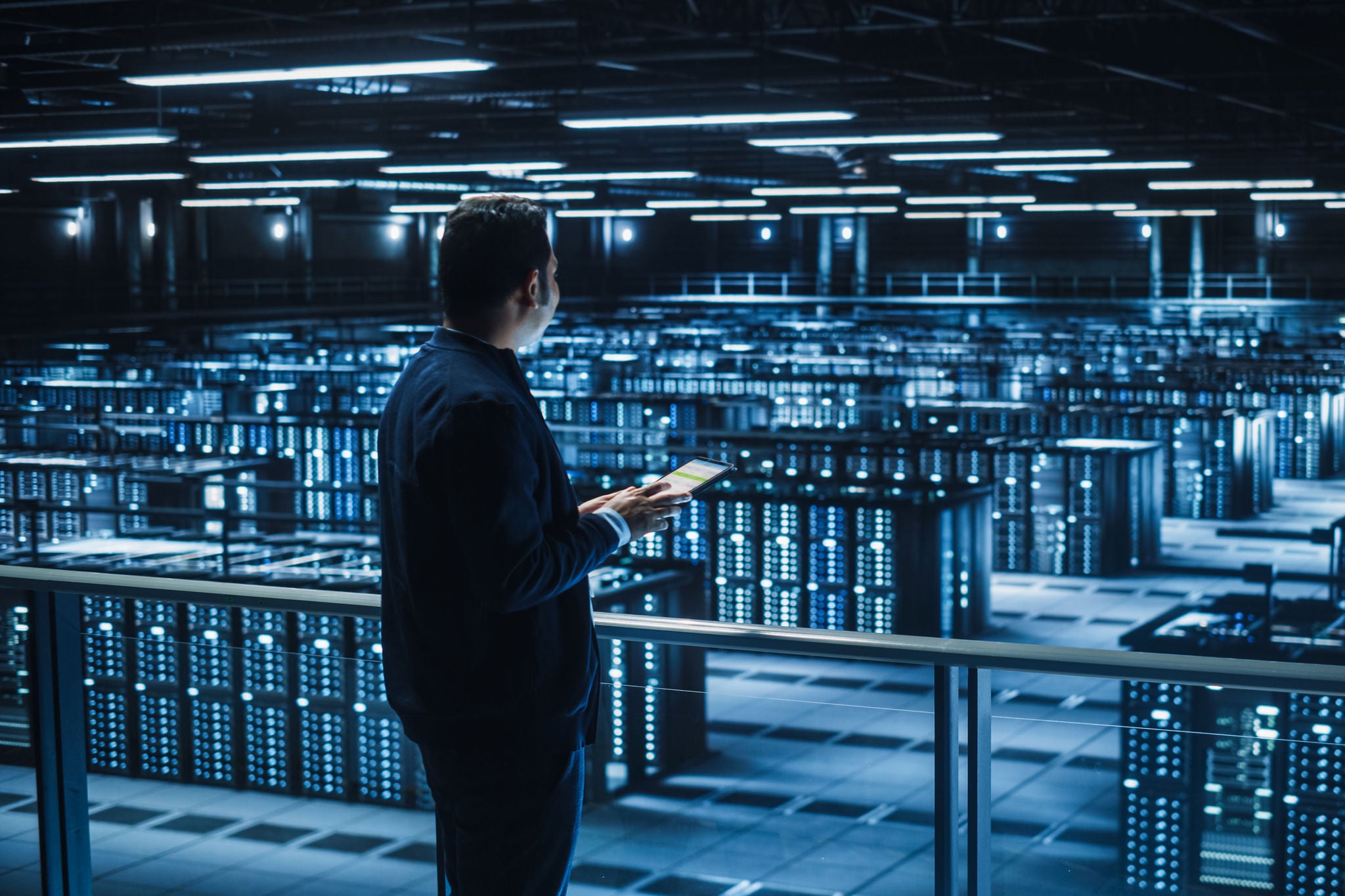EY refers to the global organization, and may refer to one or more, of the member firms of Ernst & Young Global Limited, each of which is a separate legal entity. Ernst & Young Global Limited, a UK company limited by guarantee, does not provide services to clients.
How EY can help
These efficiency gains were driven in large part by the shift to hyperscale data centers operated by large tech companies who have a strong interest in restraining energy costs and the capital to invest in continuous upgrades and optimal siting.
“The public cloud services providers design their hyperscale data centers from the ground up, everything from the siting, to the building construction, clean power source, server racks, cooling, software and processors, giving them incredible efficiency outcomes,” says Amr Ahmed, EY Americas Infrastructure and Service Resiliency Leader.
Hyperscale infrastructure represented 45% of data center energy demand in 2021, up from 16% in 2015.3
Most large tech companies also have a strong commitment to eliminating carbon emissions. Some already meet 100% of their electricity needs through renewable energy power purchase agreements and are moving to ‘‘24x7 renewables’’, where data center energy demand is met by location-specific renewables at all times.
However, several factors could challenge these impressive efficiency and decarbonization achievements. Data privacy and localization requirements could persuade some companies to keep or reinstate their own data centers. In addition, lifelike and compelling VR experiences demand low latency, which could push data processing to the edge of networks, closer to users.
As a result, some data centers could come to be sited in energy markets where procuring renewables is difficult, or where operating conditions (e.g., heat, humidity, grid intermittency) cause loss in efficiencies or require carbon-intensive back-up generation. Continuing to green power grids globally and create resilient distributed data center solutions will be essential.
Powering metaverse commerce
The conventions of commerce — creating, selling, owning, investing — being established around the metaverse are much more problematic from a climate perspective. Non-fungible tokens (NFTs) minted through blockchain-based processes and paid for with cryptocurrency, have become the predominant means for conveying ownership rights to assets such as digital art and virtual land.
Yet, an average Ethereum transaction consumes 60% more energy than 100,000 credit card transactions, while an average Bitcoin transaction consumes 14 times more energy (see Figure 2).4












